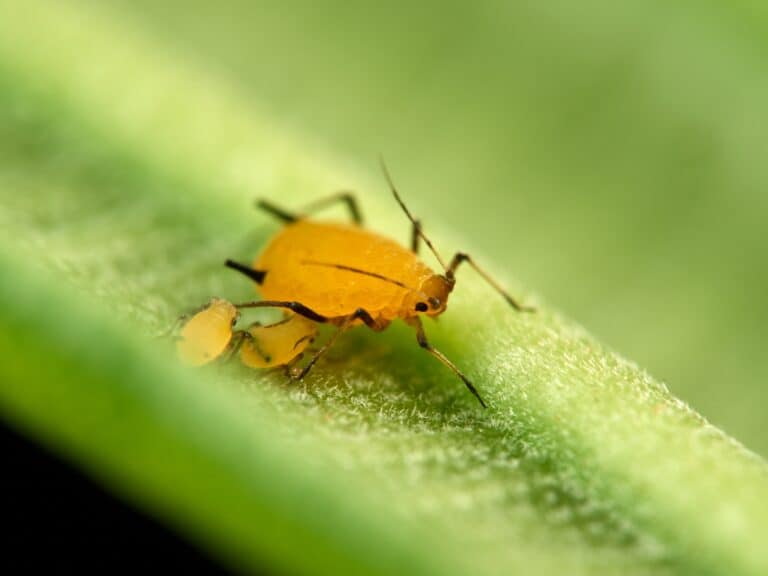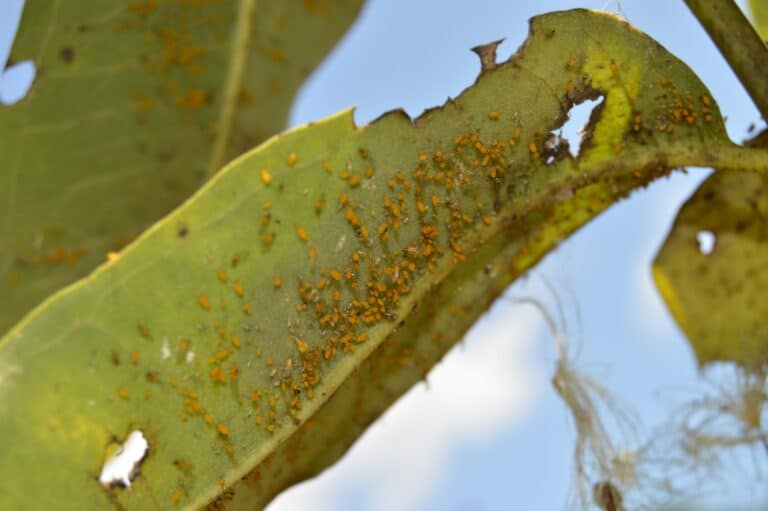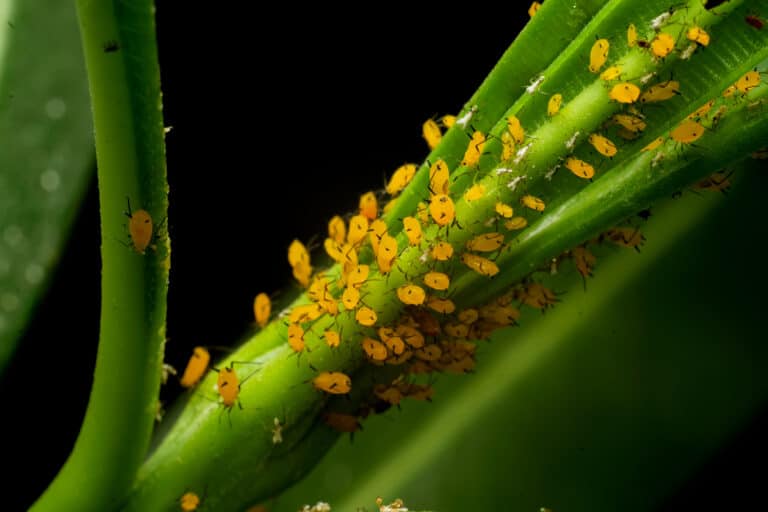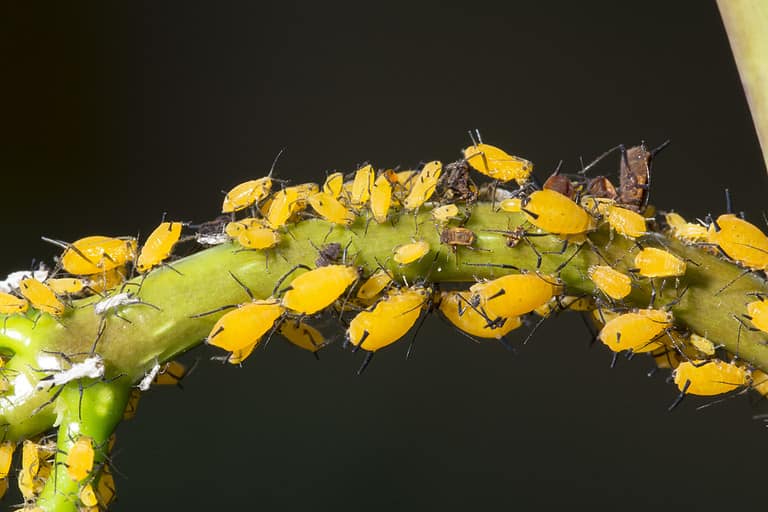Milkweed aphids Animal Pictures
Aphis nerii
© iStock.com/Wirestock
Advertisement
Pulgón amarillo. Oleander aphid or milkweed aphid. Aphis nerii
Yellow aphids communicate using vibrations and pheromones.
Aphid clusters under a milkweed leaf. Underside of leaf with insect damage.
Yellow aphids primarily infest milkweeds or the oleander plants.
Pulgón amarillo. Oleander aphid or milkweed aphid. Aphis nerii
Yellow aphids are detrimental to their ecosystem because they threaten the growth of plants.
The oleander aphid also known as milkweed aphid on the plant and sucking cell sap. These are bright yellow insects with black legs. Used selective focus.
While yellow aphids are not social insects, they are very rarely found alone.
Milkweed aphids Aphis nerii on tip of Stefanotis stalk.
Milkweed aphids Aphis nerii on tip of Stefanotis stalk with shed white exoskelteons and dark reddish dead aphids. Urban garden, Malta, Mediterranean






